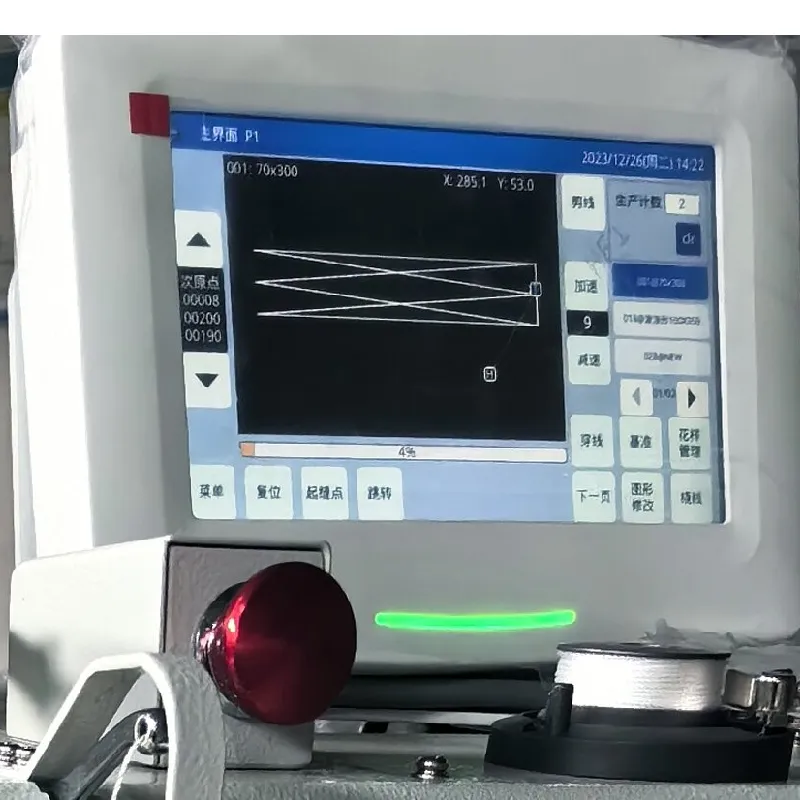Understanding the Functionality and Advantages of Lock Stitch Sewing Machines in Textile Industry
Understanding Lock Stitch Machines An Overview
The lock stitch machine is a fundamental piece of equipment in sewing, widely used in the textile and garment industries. It is recognized for its durability and versatility, making it indispensable for both professional garment manufacturing and home sewing.
What is a Lock Stitch?
A lock stitch is created by interlocking two threads—a top thread and a bobbin thread. The top thread is fed through the needle and forms a stitch on the front of the fabric. The bobbin thread, located in a lower compartment of the machine, loops up to meet the top thread, forming a secure stitch that is often used for a wide array of sewing applications. This type of stitch is characterized by its tightness and durability, making it suitable for sewing heavier materials such as denim and canvas, while also being gentle enough for lighter fabrics.
How Does a Lock Stitch Machine Work?
Lock stitch machines operate through a series of mechanical processes. When the machine is activated, the needle moves up and down to create stitches. The needle's downward motion pushes the top thread through the fabric, while a rotating hook grabs the bobbin thread. As the needle rises, the hook pulls the bobbin thread back, creating the lock stitch.
Most modern lock stitch machines are equipped with advanced features such as automatic threading, programmable stitch lengths, and different stitch patterns. These enhancements significantly increase productivity and accuracy, accommodating various sewing needs.
Advantages of Using Lock Stitch Machines
1. Strength and Security Lock stitches are strong and secure, making them ideal for seams that need to withstand tension, such as those found in denim jeans or heavy-duty outdoor gear.
what is lock stitch machine

3. Ease of Use Once set up, lock stitch machines are relatively easy to operate, making them suitable for both beginners and experienced seamstresses.
4. Precision The mechanism of interlocking threads ensures clean, precise stitches that enhance the overall quality of the finished product.
5. Durability Because of the strength of the lock stitch, garments made using this technique tend to be more durable and longer-lasting.
Applications of Lock Stitch Machines
Lock stitch machines are widely used in various applications, including garment manufacturing, upholstery, quilting, and home sewing. In the fashion industry, they are essential for constructing clothing, ensuring that seams are not only aesthetically pleasing but also resilient enough to endure daily wear and tear. Additionally, in upholstery, lock stitch machines are used to sew heavy fabrics together, helping create strong and lasting furniture pieces.
Conclusion
In summary, the lock stitch machine is a vital tool in the sewing industry, known for its strength, precision, and versatility. Understanding how it works and the benefits it offers can help both amateur and professional sewers choose the right machine for their needs. Whether making everyday clothing or specialized items, a lock stitch machine can enhance productivity and the quality of the final product, making it an essential investment for any sewing enthusiast or business.
-
Leather Sewing Machine: The Industrial Standard for Tough MaterialsNewsJul.18,2025
-
Sail Making Machine: Heavy-Duty Stitching for Industrial and Marine NeedsNewsJul.18,2025
-
Sling Sewing Machine: The Backbone of Heavy-Duty FabricationNewsJul.18,2025
-
Leather Sewing Machine: Precision for Heavy-Duty StitchingNewsJul.18,2025
-
Big Bag Sewing Machine: Powering the Future of Bulk PackagingNewsJul.18,2025
-
FIBC Sewing Machine: Essential Equipment for Bulk Bag ProductionNewsJul.18,2025
-
Heavy Duty Leather Sewing Machine: A Must-Have for Professional LeatherworkNewsMay.28,2025





























